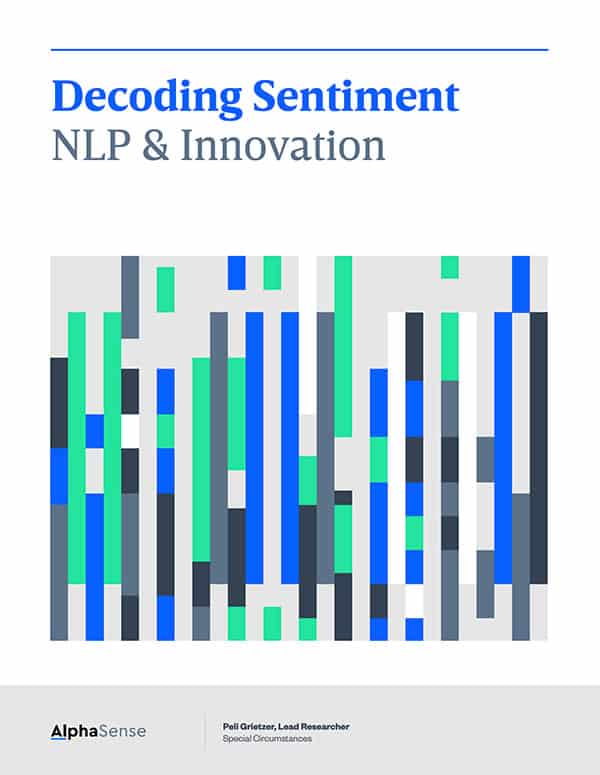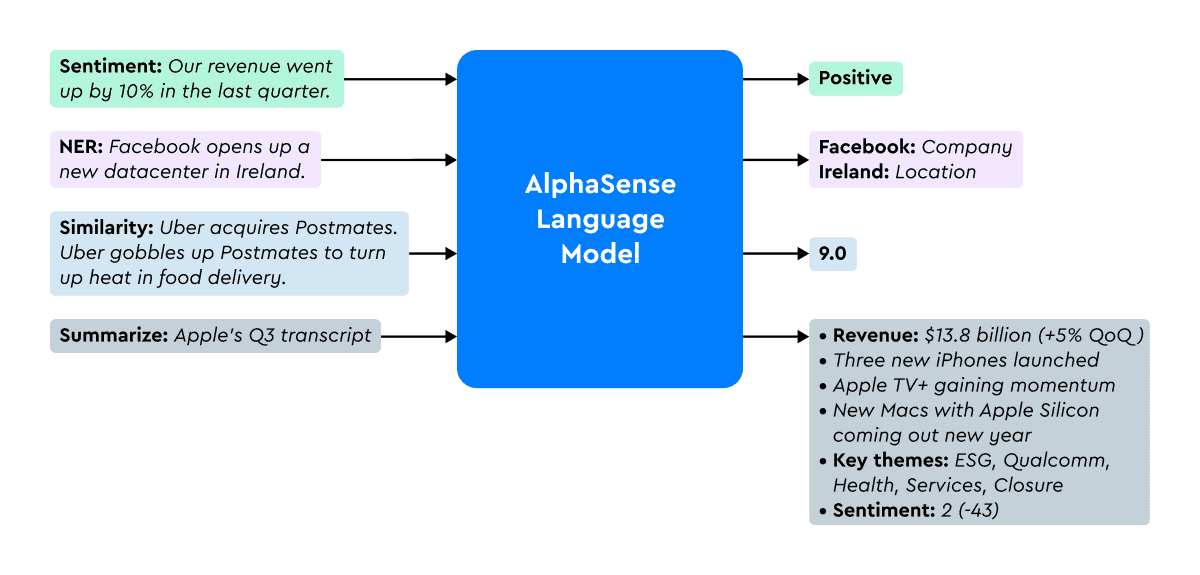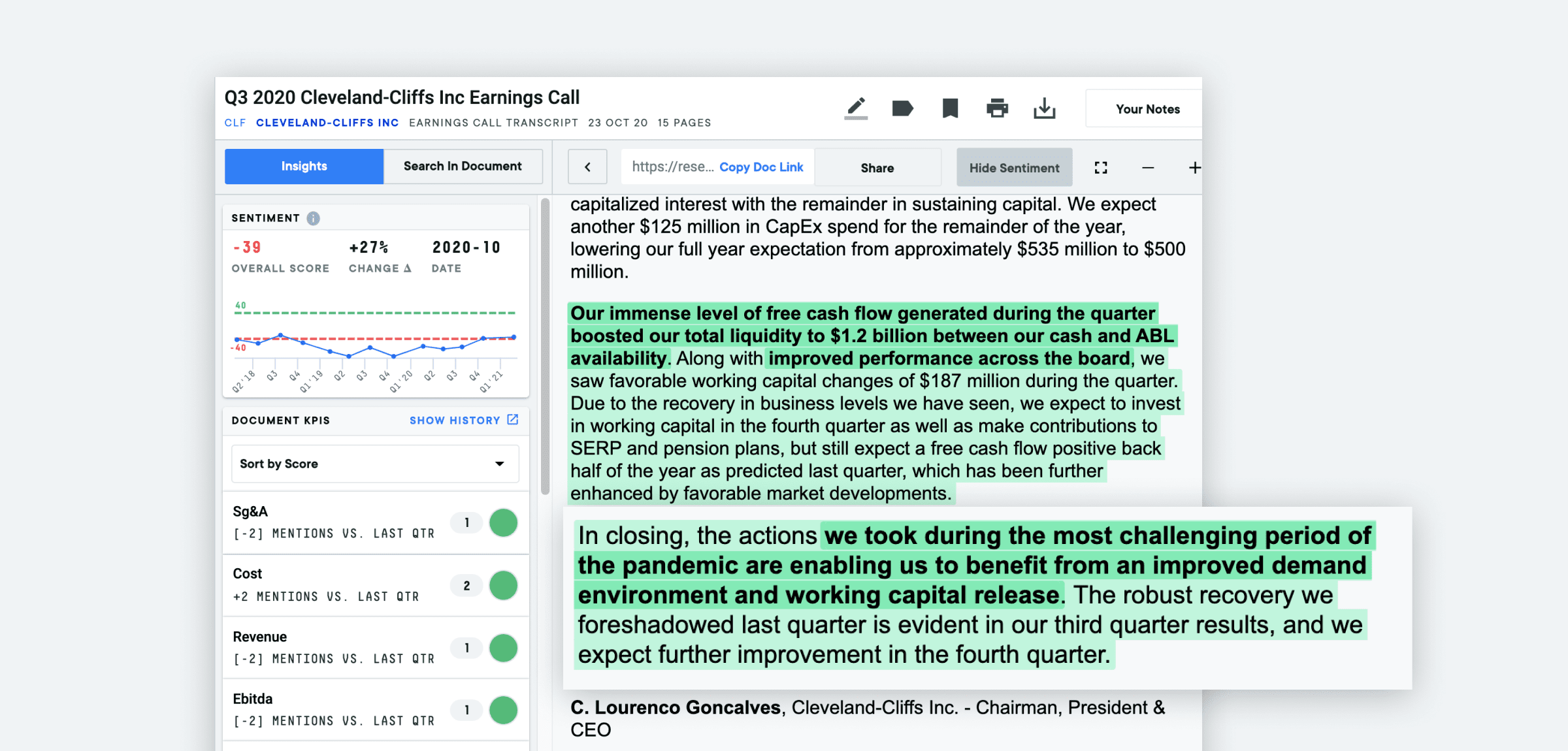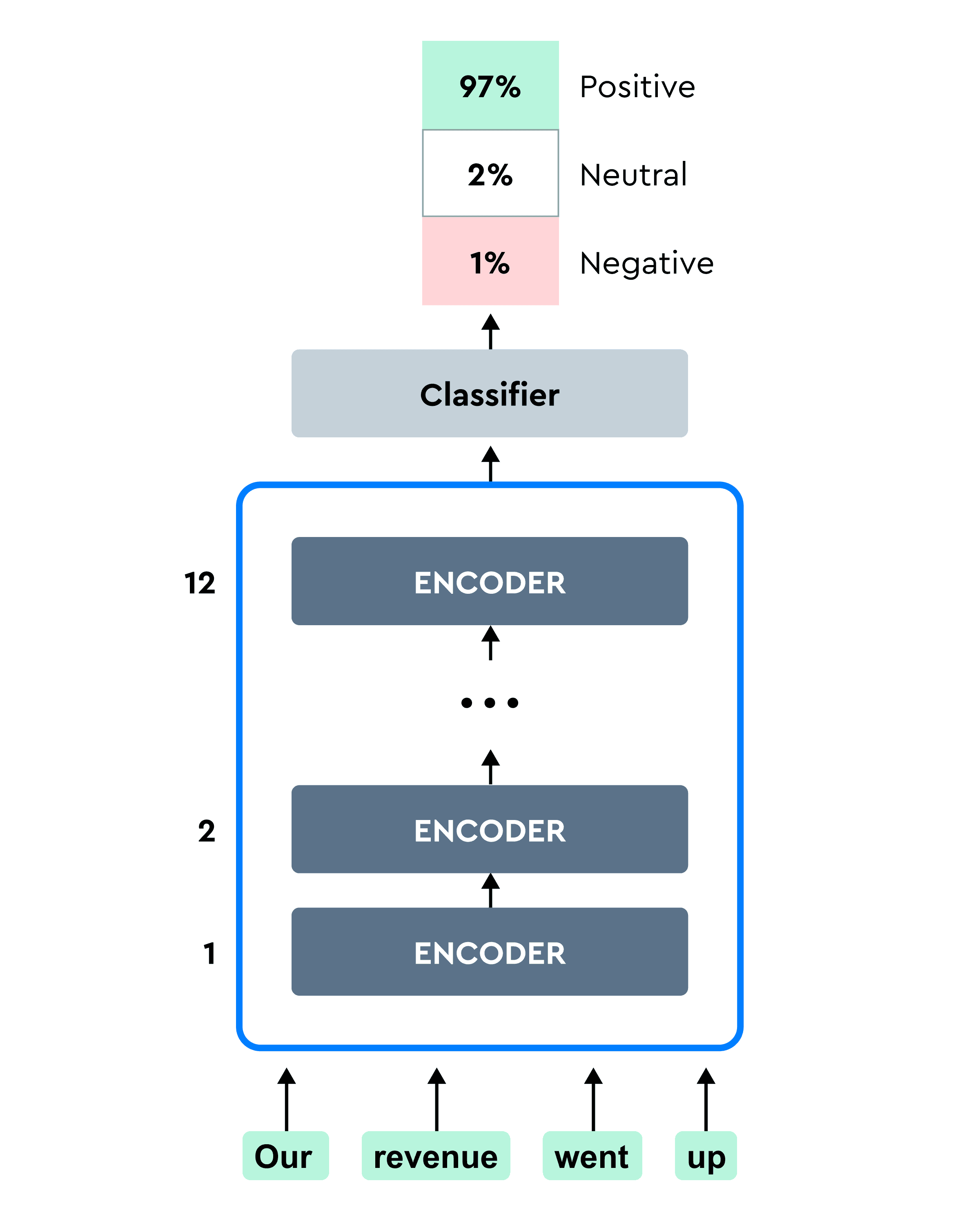The Latest Research On Emerging NLP Theory And Applications
Get the guide
A critical aspect in researching a company is to dissect and understand their earnings call, and identify the important and relevant commentary. Analyzing inflection points in the sentiment of earnings calls has long been regarded as a proxy signal for stock movement and shifts in corporate strategy. While humans are incredibly good at distinguishing between positive and negative sentiment, it takes a long time to undertake this analysis over a number of documents. As more and more documents are published, the burden to analyze the sentiment of documents only continues to increase.
The AlphaSense platform looks to solve this problem by making it easy to discover the most important viewpoints and statements, removing the burden of sentiment analysis from the user. In this way, the platform is able to analyze sentiment across a large number of transcripts, and show users the sentiment trends and the positive or negative statements within the transcripts themselves. In other words, it helps users quickly understand the key commentary (positive or negative) being expressed.
In order to accurately and quickly perform this mass sentiment analysis, an AI model that understands natural language is needed. Our AI allows AlphaSense to understand what someone means when they use a word or phrase (i.e. the sentiment behind the language) within the context of the larger statement.
AlphaSense’s sentiment analysis for transcripts uses natural language processing (NLP) and machine learning to parse the language in those documents, revealing the important snippets and significant changes since previous quarters, down to the sentence level.
Our sentiment model is built on the bleeding edge of advancements in Deep Learning and NLP. What makes the AlphaSense model so advanced is our use of Transformer-based language modeling architecture to produce state-of-the-art representations of language and context.
Machine learning models, powerful as they are, require a lot of labeled data to do well on specific tasks. And oftentimes labeled data is scarce or too resource-intensive to produce, while there is an abundance of raw and unlabeled data. Language Modeling enables us to leverage the raw data, without needing human-labeled data, to learn powerful representations of the language.
As part of our research work, we have developed a proprietary AlphaSense Language Model (ASLM) trained on over 8 million financial and business documents, giving it a cohesive understanding of the language used and its underlying concepts. Since AlphaSense’s Language Model is trained on large amounts of financial and business data, it can be fine-tuned on different NLP tasks and data sources meaning it requires less human-labeled data for each new content source or industry vertical while taking advantage of the massive amounts of labeled data we’ve already produced. We have already started to leverage our AlphaSense Language Model for entity tagging, themes, and KPI extraction, and have seen encouraging results on our other research projects.
For analyzing sentiment, the AlphaSense Language Model leverages our proprietary human-labeled training dataset, meticulously built over the last 10 years. The Language Model allows us to capture even richer representations of the language and improves the performance of our sentiment model on sentences involving complex language and mixed sentiments.
For example: in the image above, our sentiment model is able to understand that the statement is actually a positive signal for the company as they are able to benefit from it, not a negative one because of the words used (“the pandemic” and “most challenging”).
Besides having high accuracy, another critical requirement for our sentiment model is interpretability, i.e. allowing users to easily identify important phrases and sentences that are driving the model’s predictions, so users build trust in its predictions. We developed a novel method to add the interpretability component to our underlying Language Model, enabling it to highlight the important phrases without adding any overhead to the model’s processing speed.
The AlphaSense platform offers users the industry’s most accurate sentiment-driven analysis via our proprietary Language Model. For users, the identification and scoring of sentiment is an essential part of spotting critical insights, and for ultimately generating ideas and understanding markets and companies.
If you’re an AlphaSense client or trial user, you can get started with sentiment analysis in the platform. If you’re not yet a client, you can request a free trial.









